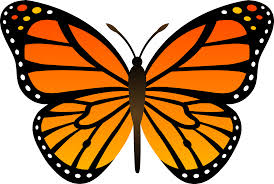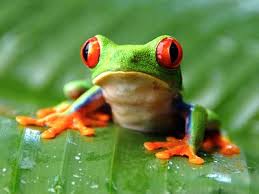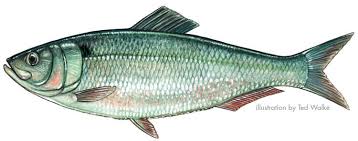NGSS Science Standard
2-LS4-1
2. Interdependent Relationships in Ecosystems
Students who demonstrate understanding can: Make observations of plants and animals to compare the diversity of life in different habitats.
THE ZOOKEEPER NEEDS YOUR HELP!
During the windy rainstorm the zoo lost some of the signs for the animals! These signs inform vistitors at the zoo about the different animals. It is your job to help the zookeeper by creating a new sign for the animals at the zoo!
Throughout this Webquest you will learn about a particular animal's life cycle. Be prepared to investigate and work together with your teammates!
The class will be seperated into teams. Each team is responsible for one animal. It is your job to work together to research the stages of the animal's life by investigating, observing, and recording the life cycle phases. During this activity your team will learn about stages and time period of the life cycle of the animal that you are researching, the things it needs to survive, and some other interesting facts about your animal. After finding information on your animal, your team is expected to share your findings to the class.
Butterflies: Welcome to the butterfly team! 
Stand in line from tallest to shortest, the tallest person is team member A, the second tallest is team member B, the third is team member C.
To complete this assignment you will need a pencil and paper.
Step 1: Answer the following questions by reasearching on this website:
http://www.kiddyhouse.com/Farm/Chicken/
http://easyscienceforkids.com/all-about-chickens/
Team member A:
1. What do they eat?
2. Where do they live?
3. One interesting fact
Team member B:
1. How many stages are in the animal's life cycle?
2. Whata are the names of the stages?
3. One interesting fact
Team member C:
1. Explain each stage of the animal's life cycle.
2. One interesting fact
Step 2: Create a new sign for the animal at the zoo. The sign should include a title (the name of the animal), a picture or drawing of the animal, what the animal eats, where the animal lives, the life cycle of the animal, and three interesting facts about the animal. This assignment will be presented to the class. During the presentation each group member should talk at least once.
Chickens: Welcome to the chicken team!

Stand in line from tallest to shortest, the tallest person is team member A, the second tallest is team member B, the third is team member C.
To complete this assignment you will need a pencil and paper.
Step 1: Answer the following questions after researching on these websites:
http://www.kiddyhouse.com/Farm/Chicken/
http://easyscienceforkids.com/all-about-chickens/
Team member A:
1. What do they eat?
2. Where do they live?
3. One interesting fact
Team member B:
1. How many stages are in the animal's life cycle?
2. Whata are the names of the stages?
3. One interesting fact
Team member C:
1. Explain each stage of the animal's life cycle.
2. One interesting fact
Step 2: Create a new sign for the animal at the zoo. The sign should include a title (the name of the animal), a picture or drawing of the animal, what the animal eats, where the animal lives, the life cycle of the animal, and three interesting facts about the animal. This assignment will be presented to the class. During the presentation each group member should talk at least once.
Frogs: Welcome to the frog team!

Stand in line from tallest to shortest, the tallest person is team member A, the second tallest is team member B, the third is team member C.
To complete this assignment you will need a pencil and paper.
Step 1: Answer the following questions after researching on these websites:
http://animalstime.com/what-eats-frogs-and-tadpoles-in-the-tropical-rainforests/
http://animalstime.com/red-eyed-tree-frog-facts-for-kids-red-eyed-tree-frog-habitat-diet/
Team member A:
1. What do they eat?
2. Where do they live?
3. One interesting fact
Team member B:
1. How many stages are in the animal's life cycle?
2. Whata are the names of the stages?
3. One interesting fact
Team member C:
1. Explain each stage of the animal's life cycle.
2. One interesting fact
Step 2: Create a new sign for the animal at the zoo. The sign should include a title (the name of the animal), a picture or drawing of the animal, what the animal eats, where the animal lives, the life cycle of the animal, and three interesting facts about the animal. This assignment will be presented to the class. During the presentation each group member should talk at least once.
Herring: Welcome to the fish team!

Stand in line from tallest to shortest, the tallest person is team member A, the second tallest is team member B, the third is team member C.
To complete this assignment you will need a pencil and paper.
Step 1: Answer the following questions after researching on these websites:
http://www.softschools.com/facts/animals/herring_facts/630/
http://www.buzzle.com/articles/herring-fish-facts.html
Team member A:
1. What do they eat?
2. Where do they live?
3. One interesting fact
Team member B:
1. How many stages are in the animal's life cycle?
2. Whata are the names of the stages?
3. One interesting fact
Team member C:
1. Explain each stage of the animal's life cycle.
2. One interesting fact
Step 2: Create a new sign for the animal at the zoo. The sign should include a title (the name of the animal), a picture or drawing of the animal, what the animal eats, where the animal lives, the life cycle of the animal, and three interesting facts about the animal. This assignment will be presented to the class. During the presentation each group member should talk at least once.
Rubric:
| 1 | 2 | 3 | |
| Task |
Very few questions were answered and not all students participated |
Not all questions were answered and not every student participated | All questions were answered and each student answered the questions that were assigned |
| Poster | Poster does not include required parts | Poster includes some required parts | Poster includes all six parts |
| Presentation | Only one student spoke and not all content was covered | Only two students spoke and ot all content was covered | Each student spoke at least once and all content was explained |
The zookeeper would like to thank you for all your hard work in making the signs for the animals! Now the visitors of the zoo will be able to read about the animals and their life cycles, all thanks to you! Nice work teams!

Adapted from: http://warrensburg.k12.mo.us/webquest/cycles/
NGSS Science Standard
2-LS4-1
2. Interdependent Relationships in Ecosystems
Students who demonstrate understanding can: Make observations of plants and animals to compare the diversity of life in different habitats.